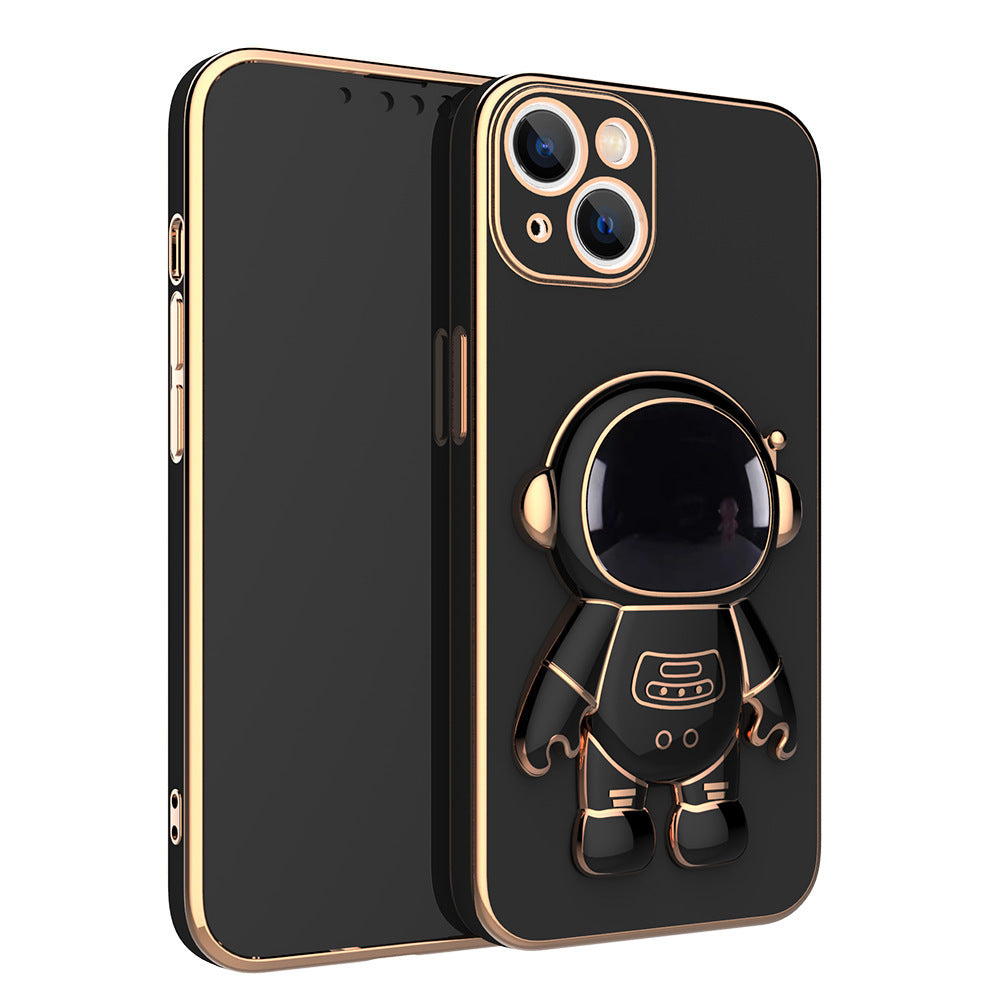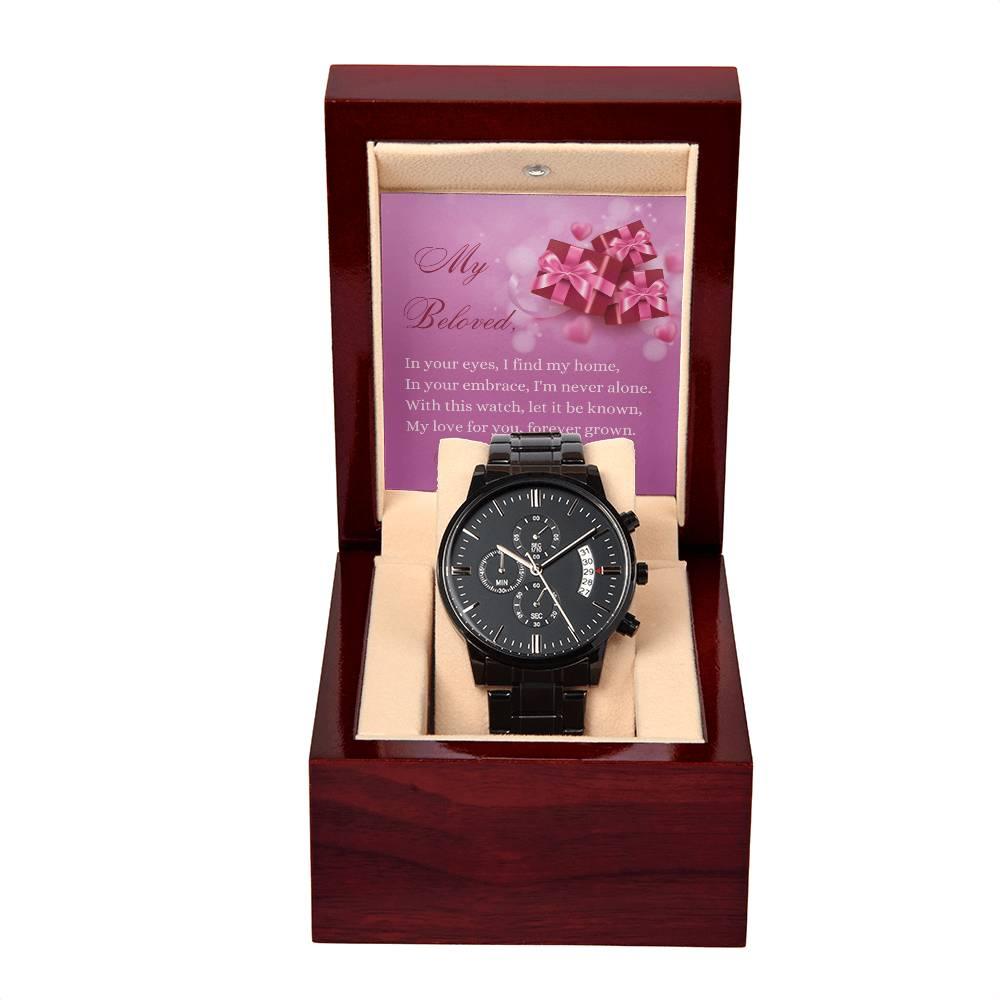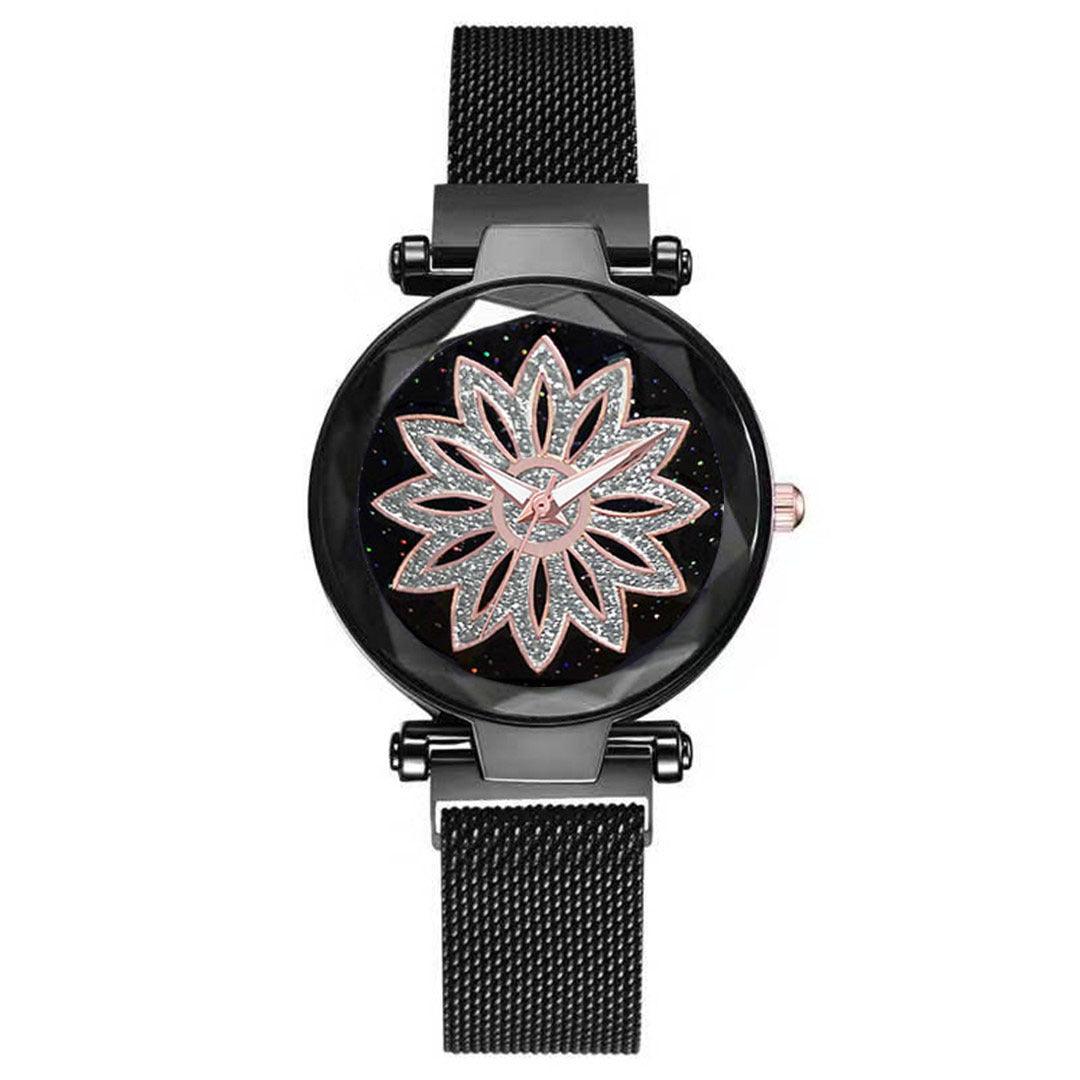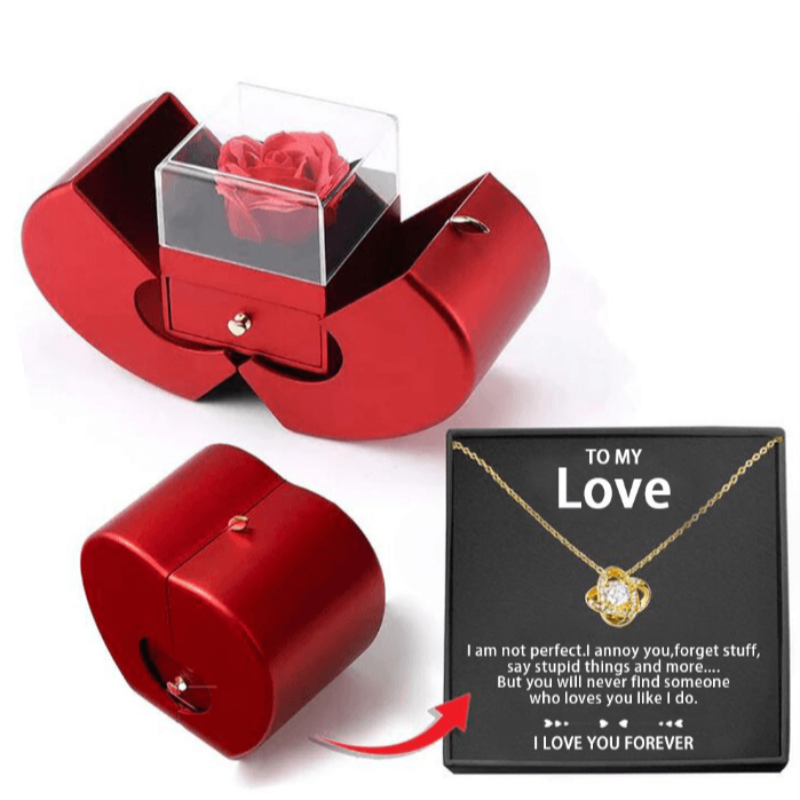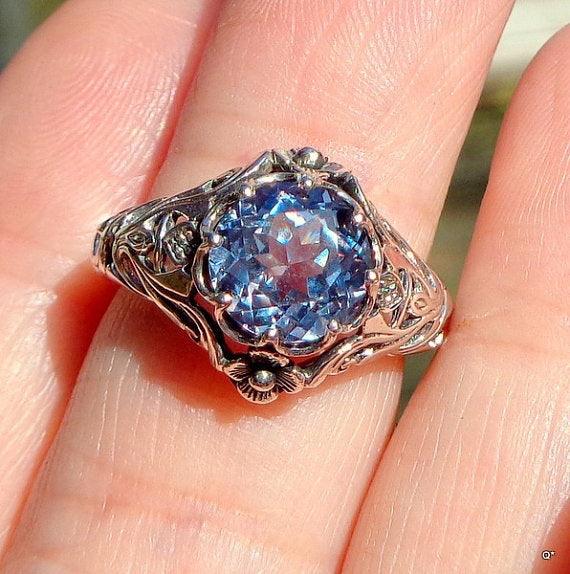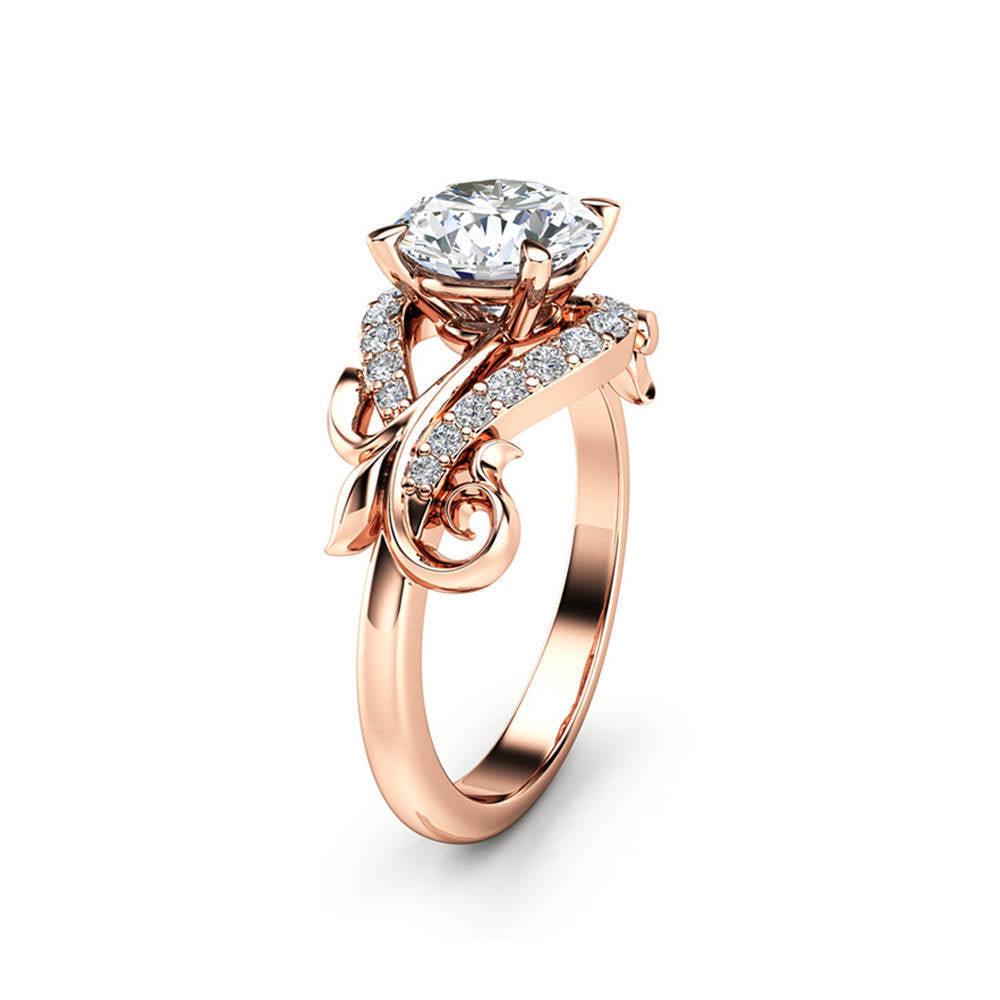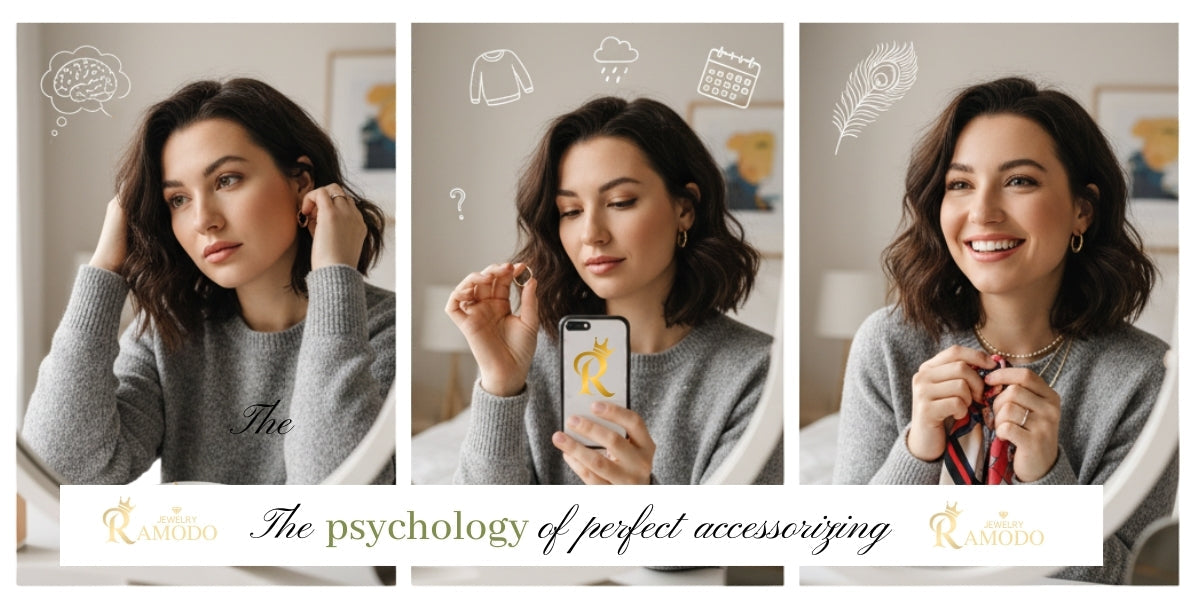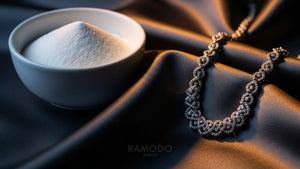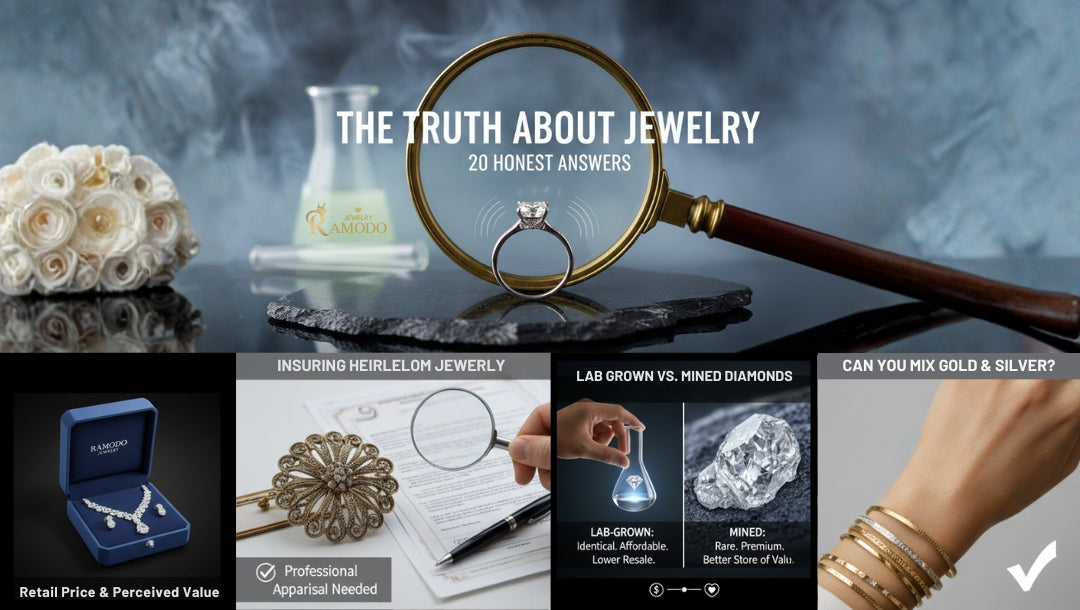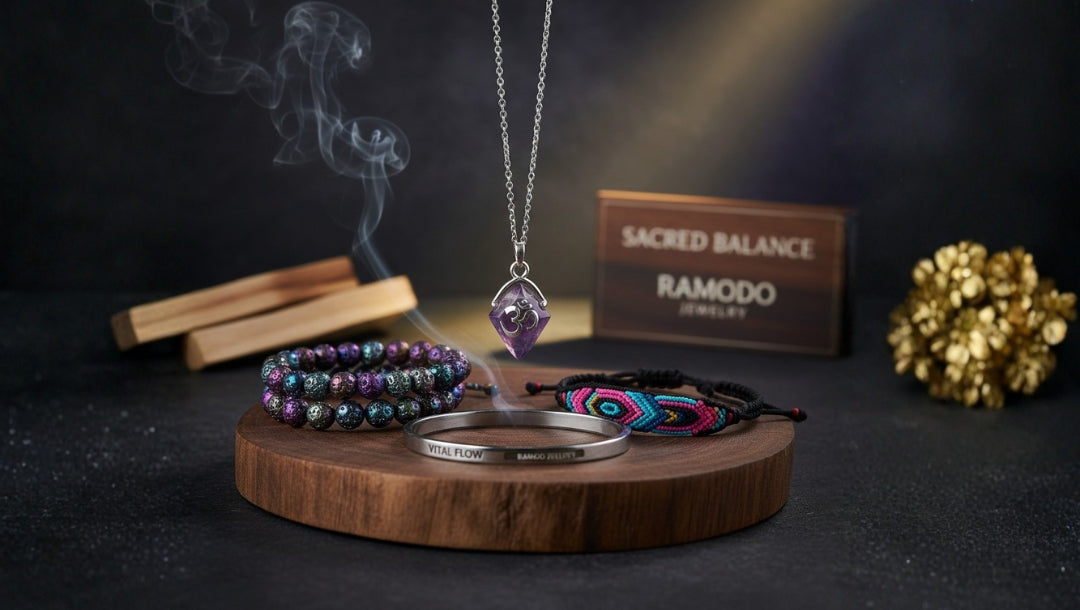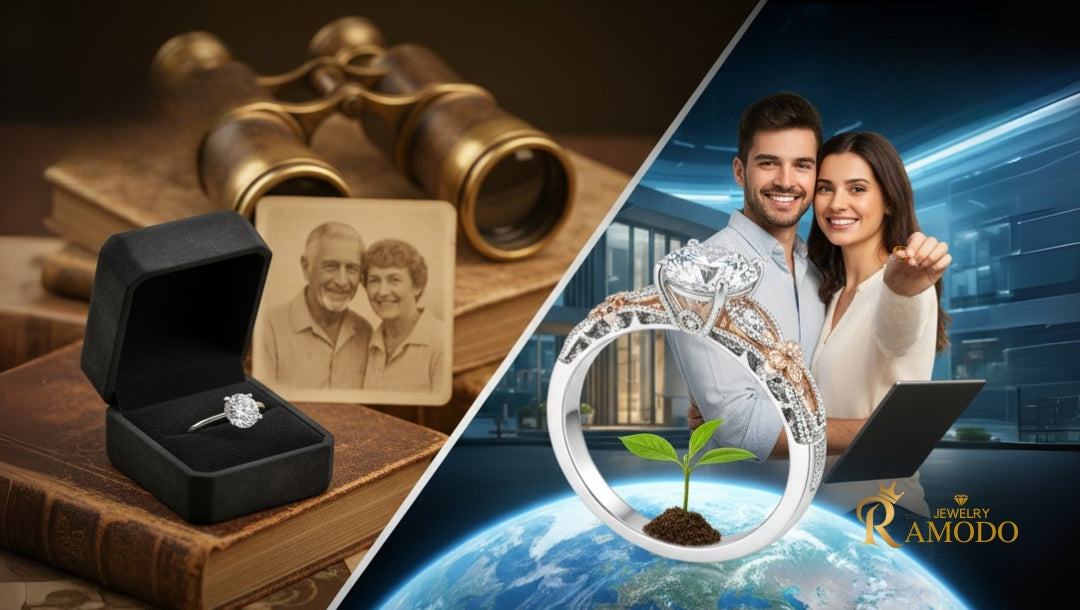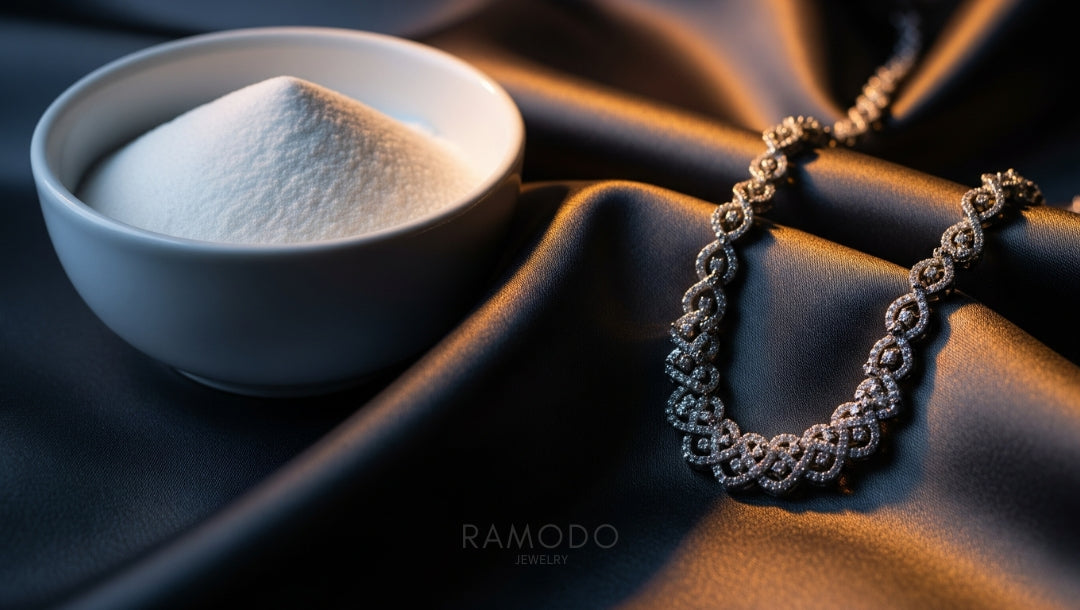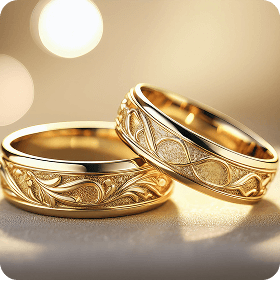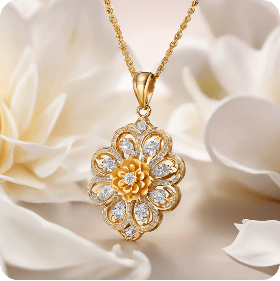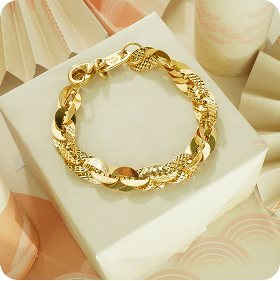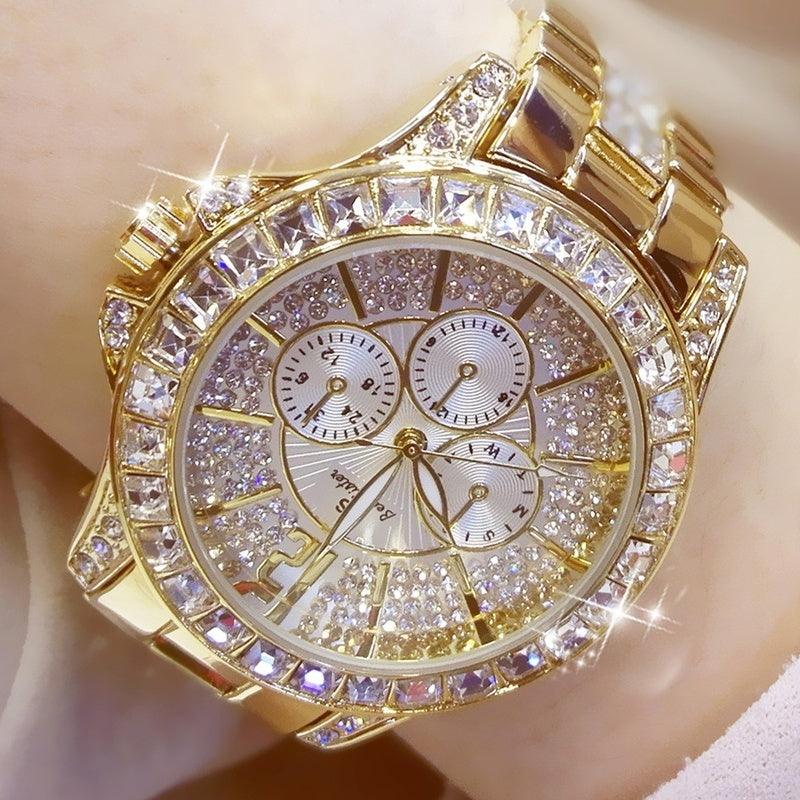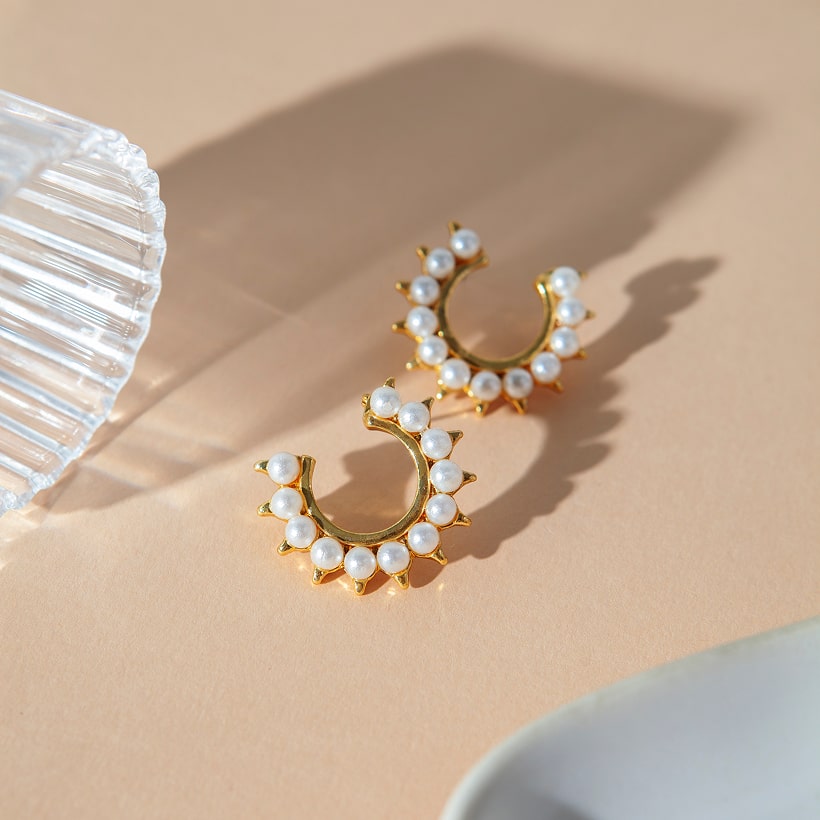What Should Be in Every Woman's Jewelry Box: The Psychology-Based Approach That Actually Works
What should be in every woman's jewelry box isn't determined by fashion magazines or jewelry store salespeople—it's dictated by human psychology, lifestyle patterns, and the mathematical reality of how we actually live our lives. This comprehensive guide reveals the essential jewelry pieces every woman needs, using psychology-based strategies that actually work for modern lifestyles. After analyzing thousands of jewelry-wearing habits and consulting with behavioral psychologists, a surprising truth emerges: most women own 70% more jewelry than they regularly wear, yet feel they have "nothing to go with" their outfits.
The traditional jewelry box wisdom—pearl necklaces, diamond studs, tennis bracelets—reflects an outdated world where women had separate "day" and "evening" lives. Modern women need jewelry boxes built for real life: video calls, travel, spontaneous plans, and the blurred lines between professional and personal time.
The Fatal Flaws in Traditional Jewelry Box Advice

Most jewelry box recommendations fail because they assume a lifestyle that doesn't exist. The classic "little black dress and pearls" formula worked when women had predictable social calendars and clear dress codes. Today's reality involves morning yoga classes, afternoon client meetings, evening dinner dates, and weekend adventures—often all in the same day.
Traditional advice also ignores the psychological burden of decision fatigue. Research shows that people make over 35,000 decisions daily, and jewelry selection shouldn't add unnecessary complexity. The most successful jewelry collections reduce choices while expanding possibilities.
The 3-Layer Psychology of Jewelry Selection
Understanding how your brain actually processes jewelry choices revolutionizes what belongs in your jewelry box. Neuroscientists have identified three distinct decision-making layers that occur in split seconds when you're getting dressed.

-
Layer 1: The Automatic Response (2 seconds)
Your brain instantly assesses mood, energy level, and the day ahead. This happens before conscious thought kicks in. Jewelry choices made at this level rely on muscle memory and emotional association. This is why certain pieces become daily "uniforms"—they require zero mental energy.
-
Layer 2: The Practical Filter (8 seconds)
Conscious evaluation begins. Your brain considers schedule, weather, clothing choice, and practical constraints. Will earrings interfere with phone calls? Does this necklace work with your sweater neckline? Can you sleep in these earrings if you stay over somewhere?
-
Layer 3: The Identity Expression (15+ seconds)
Only after practical concerns are resolved does creative expression begin. This is where personal style, mood enhancement, and social signaling happen. Most jewelry advice focuses entirely on this layer, ignoring the foundational decisions that occur first.
The Essential Foundation: Your Daily Armor
Every functional jewelry box needs what psychologists call "decision eliminators"—pieces so perfectly matched to your lifestyle that they require no thought. These become your daily armor, the jewelry equivalent of a white button-down shirt.

The Perfect Everyday Earrings (Two Pairs Maximum)
One pair of small hoops and one pair of subtle studs handle 80% of all earring situations. The hoops work with hair up or down, professional or casual outfits, and transition seamlessly from day to evening. The studs serve as backups and work for gym sessions, swimming, or sleeping.
Size specifications for optimal versatility:
- Hoops: 10-15mm diameter for video call visibility without overwhelming
- Studs: 4-6mm for comfort during sleep and exercise
- Both should be substantial enough to register in professional settings
- Small enough to wear 24/7 without discomfort
The Necklace That Does Everything
Instead of multiple chain lengths, invest in one 18-inch necklace with high-quality construction. This length works with most necklines, layers well with other pieces, and provides the versatility that multiple shorter chains cannot. The pendant or charm should be personally meaningful—you'll wear this piece more than any other in your collection.
RAMODO JEWELRY's research shows that women who identify one "signature" necklace report 40% higher satisfaction with their overall jewelry collection. This piece becomes an extension of personal identity rather than just an accessory.
The Strategic Supporting Cast
Once your foundation is established, supporting pieces should fill specific functional gaps rather than adding variety for variety's sake. Each additional piece should solve a specific problem or extend the versatility of your core collection.
The Statement Piece That Actually Gets Worn
Most statement jewelry sits unworn because it only works in perfect scenarios. Choose one bold piece that complements your daily uniform rather than requiring a complete outfit change. This might be a chunky bracelet that works with your basic sweaters, or striking earrings that transform simple outfits.
The key is choosing statement pieces that elevate your existing wardrobe rather than demanding new clothes. Ask yourself: "Will I wear this with what I wore yesterday?" If the answer is no, reconsider.
The Professional Power Piece
One piece that instantly signals competence and authority can transform your professional presence. This doesn't mean expensive—it means intentional. A well-chosen watch, sophisticated earrings, or elegant necklace that you wear to important meetings creates psychological confidence for both you and others.
Research from business psychology shows that people wearing jewelry they consider "powerful" score higher on confidence measures and receive more positive evaluations from colleagues. Choose something that makes you stand taller.
The Lifestyle-Specific Additions
Beyond the universal foundation, your jewelry box should reflect your actual life, not an aspirational version. Honest assessment of your lifestyle patterns determines what else deserves space.

For the Frequent Traveler
Security and versatility become paramount.
Essential travel jewelry characteristics:
- Can't be easily lost or damaged during transit
- Doesn't require special storage or care
- Works across multiple countries and cultures
- Avoid sentimental pieces that would devastate you if lost
Practical travel considerations:
- Magnetic or screw-back earrings instead of traditional posts
- Necklaces with sturdy clasps that won't break when hastily packed
- Materials that don't tarnish or require special cleaning
- Pieces that photograph well in various lighting conditions
For the Active Lifestyle
Sweat, water, and movement create specific jewelry requirements.
Active lifestyle essentials:
- Stay secure during movement and exercise
- Resist tarnishing from moisture and sweat
- Don't interfere with equipment or range of motion
- Comfortable enough for extended wear
Many active women need duplicate sets—one for working out and one for everything else. This prevents the constant removal and replacement that leads to lost jewelry.
For the Social Butterfly
Frequent photography and varied social situations require jewelry that looks good in photos and works across different social contexts.
Social media considerations:
- Photogenic under various lighting conditions
- Creates consistent personal branding across platforms
- Complements rather than clashes in group photos
- Works across different social contexts and dress codes
Social media has created new jewelry requirements that previous generations never considered. Pieces need to be photogenic and create consistent personal branding across platforms.
The Practical Storage Revolution
What should be in every woman's jewelry box isn't just about the jewelry—it's about how it's organized and stored. The best jewelry collection becomes useless if pieces are tangled, tarnished, or impossible to find quickly.

The 30-Second Rule
Every piece in your jewelry box should be accessible within 30 seconds of deciding to wear it.
Storage requirements:
- No tangled chains requiring untangling
- No digging through drawers or containers
- No pieces buried behind others
- Easy identification at a glance
This rule forces hard decisions about quantity and storage methods. It's better to have fewer pieces that are always accessible than more pieces that become buried and forgotten.
Visibility Equals Wearability
Jewelry you can't see gets forgotten.
Effective storage principles:
- Open organizational systems over closed boxes
- Display pieces rather than hide them
- Accept dust risk for increased wearability
- Group similar pieces for easy comparison
RAMODO.NET features organizational systems specifically designed around the visibility principle, recognizing that even beautiful jewelry becomes worthless if it's not worn.
The Economic Psychology of Jewelry Ownership
Understanding the true cost of jewelry ownership changes what belongs in your collection. The purchase price represents only a fraction of total ownership cost when you factor in storage, maintenance, insurance, and opportunity cost of unused items.

Cost Per Wear Analysis
Divide the purchase price by the number of times you've worn each piece. Expensive jewelry that gets worn frequently often provides better value than cheap jewelry that sits unused. This analysis reveals which types of purchases make sense for your lifestyle.
Many women discover their most cost-effective pieces are mid-range items that perfectly match their daily routine, rather than special occasion jewelry that rarely sees daylight.
The Guilt Factor
Unworn jewelry creates psychological burden through guilt and decision fatigue. Each unused piece represents money spent poorly and space occupied unnecessarily. Regular collection editing based on actual wear patterns improves both financial and mental well-being.
Building Your Collection Strategically
Instead of accumulating jewelry randomly, successful collections grow through strategic additions that expand versatility without creating redundancy. Each new piece should multiply the possibilities of existing pieces rather than simply adding one more option.

The Multiplication Principle
The best jewelry additions work with multiple existing pieces to create new combinations. A simple chain that works with three different pendants provides more value than one complete necklace. Earrings that complement both your everyday and statement necklaces extend the utility of all pieces.
Calculate the number of new outfit combinations each potential purchase creates. High-multiplication pieces deserve investment; low-multiplication pieces should be avoided regardless of their individual appeal.
Quality vs. Quantity Mathematics
Basic math reveals why quality wins over quantity in jewelry collections. Five high-quality pieces that each work with four others create 20 possible combinations. Twenty low-quality pieces that don't coordinate create just 20 individual looks with no multiplication effect.
Quality pieces also maintain their appearance and functionality longer, reducing replacement costs and the frustration of jewelry that doesn't work properly.
The Seasonal Adaptation Strategy
Your jewelry box should evolve with seasonal changes in clothing, activities, and skin tones. This doesn't mean completely different collections, but strategic adjustments that maximize relevance year-round.
Temperature Considerations
Metal jewelry conducts temperature, making some pieces uncomfortable in extreme weather.
Seasonal requirements:
- Summer jewelry: Resist tarnishing from sweat, comfortable against warm skin
- Winter pieces: Work with scarves, high necklines, and coat collars
- Consider visibility changes with seasonal clothing
- Account for activity level changes throughout the year
Color Temperature Matching
Seasonal skin tone changes affect how jewelry colors appear. The same gold that looks warm and flattering in summer might appear brassy in winter's harsh light. Having options in different metal tones extends the seasonal utility of your collection.
This doesn't require duplicate pieces in every metal—strategic mix-and-match options provide flexibility without excessive expense.
The Future-Proofing Element
Smart jewelry box curation considers how your life might change and chooses pieces that will remain relevant. Job changes, relationship status, family additions, and aging all affect jewelry needs in predictable ways.
Versatile Investment Pieces
Choose jewelry that transcends specific life phases.
Future-proof characteristics:
- Appropriate for both dating and marriage
- Suitable across career advancement levels
- Adaptable to different body changes over time
- Timeless rather than trendy designs
RAMODO JEWELRY specializes in timeless designs that maintain relevance across life changes, ensuring your investment remains valuable as your circumstances evolve.
Maintenance Considerations
Choose pieces you can realistically maintain properly.
Maintenance factors:
- Professional cleaning requirements and frequency
- Storage needs and complexity
- Insurance considerations
- Time investment for proper care
High-maintenance pieces should earn their keep through frequent wear or special significance.
The Confidence Catalyst Effect
The most important element in any jewelry box isn't a specific piece—it's the psychological effect of wearing jewelry that makes you feel authentically yourself. This confidence catalyst differs for everyone but shares common characteristics.

Personal Significance Over Price
Jewelry that connects to personal memories, achievements, or values creates more confidence than expensive pieces without meaning. A simple ring from a meaningful relationship often outperforms diamonds in terms of psychological impact.
Choose pieces that remind you of your strength, accomplishments, or the people who matter most. This emotional connection translates into visible confidence that others notice and respond to positively.
The Authenticity Factor
Jewelry that feels "you" creates natural confidence because there's no disconnect between internal identity and external presentation. When jewelry choices align with personality, the wearer appears more authentic and self-assured.
This explains why some people feel uncomfortable in traditional "nice" jewelry—it doesn't match their internal self-image. Honor your authentic style preferences rather than conforming to external expectations.
Creating Your Personal Jewelry Box Blueprint
Building an effective jewelry box requires honest self-assessment and strategic planning rather than impulse purchases or wishful thinking about lifestyle changes.

The Lifestyle Audit
Track your actual activities for two weeks, noting when you wear jewelry and what pieces work best in different situations. This reveals the gap between your jewelry collection and your actual life, guiding future decisions.
Most women discover they need more casual, versatile pieces and fewer formal, special-occasion items than they imagined.
The Personal Style Definition
Identify three words that describe your authentic style, then evaluate whether your jewelry collection reflects these qualities. Misalignment between personal style and jewelry collection creates daily decision stress and reduces satisfaction with your overall appearance.
The RAMODO JEWELRY Difference

Professional jewelry curation considers both individual psychology and practical functionality. The pieces that should be in every woman's jewelry box aren't determined by trends or tradition—they're selected based on scientific understanding of how jewelry actually functions in modern life.
Quality jewelry that matches your lifestyle provides daily confidence and eliminates decision fatigue. When every piece in your collection serves a specific purpose and reflects your authentic style, getting dressed becomes effortless and enjoyable.
Discover jewelry designed for real life at RAMODO.NET, where every piece is curated to maximize versatility, minimize maintenance, and enhance your authentic style. Because the best jewelry box isn't filled with the most pieces—it's filled with the right pieces.
Frequently Asked Questions
Q: How many pieces of jewelry should I actually own? A: Quality over quantity always wins. Most women function optimally with 8-12 carefully chosen pieces that work together, rather than 50+ pieces that create decision fatigue. Focus on building a foundation of versatile pieces before adding specialty items.
Q: Should I invest in expensive jewelry or buy more affordable options? A: Calculate cost-per-wear rather than focusing on upfront price. A $200 necklace you wear twice weekly costs $1.92 per wear over two years, while a $50 necklace you never wear costs infinite dollars per wear. Invest in pieces that match your actual lifestyle.
Q: What's the biggest mistake women make when building jewelry collections? A: Buying for imaginary occasions instead of real life. Most women buy jewelry for the life they think they should have rather than the life they actually live. This leads to collections full of unworn "special occasion" pieces and nothing for daily wear.
Q: How do I know if a piece of jewelry is worth keeping? A: Apply the one-year test: If you haven't worn it in the past year, you probably won't wear it in the next year. Exceptions include pieces with deep sentimental value or those awaiting specific occasions (like a wedding set before engagement).
Q: Can I mix different metals in my jewelry collection? A: Absolutely. Modern style embraces mixed metals, and limiting yourself to one metal type severely restricts your options. Choose pieces based on how they work with your wardrobe and lifestyle, not arbitrary metal matching rules.
Q: What should I prioritize: matching sets or individual pieces? A: Individual pieces that work well together provide more versatility than matching sets. Sets limit your styling options, while well-chosen individual pieces can create multiple combinations and adapt to different occasions.
Q: How often should I update my jewelry collection? A: Update based on lifestyle changes, not trends. New job, relationship status, or major life transitions might require different jewelry. Otherwise, focus on maintaining and maximizing your existing collection rather than constantly adding new pieces.
Q: Is it worth insuring my jewelry? A: Insure pieces you couldn't afford to replace immediately. If losing a piece would create financial hardship or devastating emotional loss, insurance makes sense. For easily replaceable everyday pieces, insurance often costs more than replacement.


